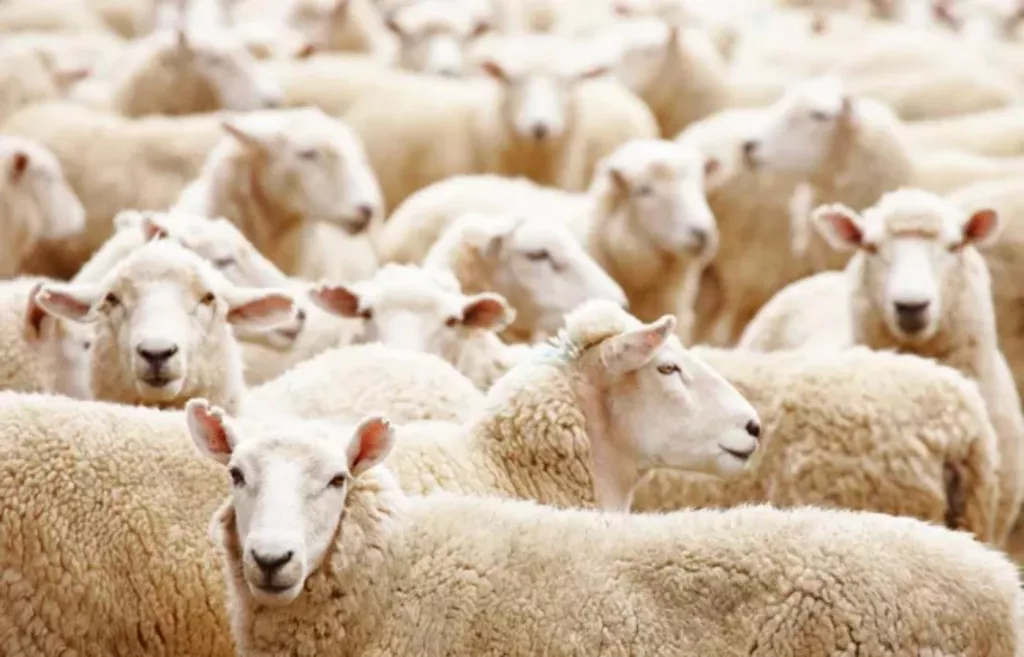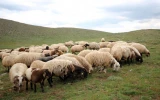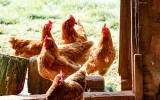Is Sheep Farming Profitable? (Detailed Breakdown)
Sheep farming, an agricultural practice with a rich history, offers diverse opportunities for generating income. It encompasses not just the sale of meat and wool, but also dairy products and breeding stock. While profitability can vary based on factors like location, market demand, and farm management, a detailed breakdown reveals the specifics of its income potential and operational costs.
Sheep farming can be profitable, with average net returns of $75–$150 per ewe annually. Initial costs are $200–$300 per ewe for infrastructure and equipment, while ongoing expenses include feed, healthcare, and labor. The profitability of the industry relies on flock size, market prices, and efficient management.
While wool and meat are the obvious moneymakers, there's a hidden gem in sheep farming that many overlooks: lanolin, a valuable byproduct used in cosmetics. As you read further, let's unravel this surprising aspect of sheep farming together!
Summary
- Higher quality wool like Merino can fetch $5–$10 per pound, while lower quality wool is $1-3 per pound.
- The initial purchase cost per ewe or ewe lamb ranges from $100 to $200, with more productive breeds costing more upfront.
- Gross revenue per acre ranges from $500–$1500 annually, factoring in income from lamb, wool, and breeding stock sales, while net profit per acre is estimated at $400–$1200 after expenses.
- Generally, 11–50 sheep can lead to moderate profits, while 100+ sheep have the potential for substantial profits with effective management.
- As demand for natural ingredients grows, lanolin represents an opportunity to supply a high-value product. Sustainably sourced lanolin can also allow farmers to charge a premium.

On this page:
Breakdown of Profits From Sheep Farming
Average profit per sheep
| Factor | Range |
|---|---|
| Initial cost (per sheep) | $100 - $200 |
| Yearly maintenance | $20 - $40 |
| Revenue (meat, wool, breeding) | $150 - $250 |
| Net profit (per sheep) | $30 - $110 |
-
The initial purchase price of breeding stock is a major upfront cost, typically ranging from $100-200 per ewe lamb or adult ewe. More productive breeds like Suffolk may command higher prices.
-
Annual costs to maintain the flock include feed, veterinary care, shearing, facilities/fencing, and labor. These costs can range from $20-40 per ewe depending on the production system. Intensive operations have higher feed and labor costs.

-
Revenue comes from the sale of lambs, cull breeding stock, and wool. Lamb sales are the primary source of income, generating $150-250 per ewe annually at favorable market lamb prices.
-
Additional revenue can come from wool sales and breeding stock sales. Productive breeds like Merino can increase wool revenue through higher fleece weights and quality. Breeding stock is also one of the sources of income in alpaca farming.
-
Given the cost and revenue estimates, net profit per ewe can range from $30-110 annually per sheep. Careful flock management and strong lamb and wool prices are key to maximizing profitability.
Sheep profit per acre
| Factor | Estimated Profit Range per Acre |
|---|---|
| Revenue (from meat, wool, and breeding) | $500 - $1,500 |
| Expenses (feed, healthcare, labor) | $100 - $300 |
| Net profit (per acre) | $400 - $1,200 |
-
Gross revenue per acre can range from $500-1500 annually. This factors in income from lamb sales, cull ewe/ram sales, and wool production. Stocking density is a key driver, with higher revenue potential at stocking rates of 5-8 ewes per acre.
-
Annual expenses per acre, including feed, healthcare, facilities, and labor, typically range from $100-300. Pasture productivity and utilization influence feed costs. Preventative health practices reduce medical costs.
-
Given the revenue and expense estimates, net profit per acre can range from $400-1200 annually. Proper grazing management helps optimize pasture use, lamb growth rates, and stocking density, all of which drive profitability.

How much is sheep wool worth
| Wool Type | Estimated Price Range per Pound |
|---|---|
| Lower quality wool | $1 - $3 |
| Higher quality wool (e.g., Merino) | $5 - $10 |
-
Wool from common meat and dual-purpose breeds often yields lower value wool, with prices averaging $1-3 per pound. This includes wool that is very coarse or contains more guard hairs. Minimal processing further reduces value.
-
Higher quality wool from breeds like Merino can fetch $5-10 per pound. Finer micron wool below 25 microns commands the highest prices. Proper shearing and cleaning add further value by preparing the wool for processing.
Additional factors like wool color, length, and crimp can also impact value. Strong worldwide demand for fine wool in particular helps buoy prices for higher quality fleeces.
Profit margin analysis in sheep farming
In the sheep farming industry, your profit margin will largely depend on how well you manage these costs with the income from lamb and wool sales.
The industry range for profit margins in sheep farming is approximately 5-20%, with top performers achieving around 20%. The key driver is gross margin per ewe of $100-150.
To calculate the profit margin for sheep farming, let's assume a sheep farm has 100 ewes that produce 100 lambs.
- The lambs are sold for $150 each, so lamb revenue is 100 * $150 = $15,000.
- The 100 ewes are sold for $200 each, so ewe revenue is 100 * $200 = $20,000.
- Total revenue is $15,000 + $20,000 = $35,000.
The operating costs to maintain the flock are $30,000, including feed, veterinary care, utilities, etc.
The profit margin is calculated as:
(Total revenue - Total operating costs) / Total revenue
(35,000 - 30,000) / 35,000 = 5,000 / 35,000 = 14.3%
Sheep Farming Costs
Below, let's take a closer look at the various costs involved in a successful sheep farming operation:
Sheep farming initial costs
Cost for the initial purchase of sheep flock
When starting a sheep farming operation, one of the major upfront costs is purchasing the initial breeding flock. This involves buying ewes (female sheep) and rams (male sheep) to establish your flock's genetics and begin lambing.
| Purchase of sheep flock | Estimated Cost Range |
|---|---|
| Ewe per head | $100 - $300 |
| Per ram | $300 - $1000 |
- Ewe prices typically range from $100-$300 per head, with specific costs depending on the breed, age, pedigree, quality, and source of the animals.
Registered breeding stock from premier bloodlines will be at the higher end of the range. Commercial-grade ewes would be priced lower.
- Rams can cost $300-$1000 or more. Top-tier registered Rams command higher prices to obtain superior genetics.
Cost of fencing and other facilities
Secure fencing is vital for protecting your flock from predators and ensuring they don't wander off. Facilities like barns provide shelter and space for management activities.
| Item | Estimated Cost Range |
|---|---|
| Fencing | $2 - $10 per linear foot |
| Shelter/Barn | $5,000 - $50,000 initial cost |
Sheep farming operating costs
Cost of feed and nutrition
Your sheep's health and productivity hinge on proper nutrition, which includes a mix of hay, grain, and pasture. Costs will vary based on local prices and the quantity needed.
| Item | Estimated Cost Range |
|---|---|
| Hay | $30 - $250 per ton |
| Grain | $0.10 - $0.20 per pound |
| Pasture | $25 - $75 per acre (annual lease rate) |
Labor and management costs
Whether you hire help or use family labor, factor in the cost of shepherding and day-to-day management.
| Item | Estimated Cost Range |
|---|---|
| Labor | $12 - $20 per hour |
| Shepherd | Salary can vary widely |
Costs for health and other maintenance tasks
Keeping your sheep healthy involves regular vaccinations and access to fresh water, both of which need budgeting.
| Item | Estimated Cost Range |
|---|---|
| Vaccination | $1 - $3 per sheep |
| Fresh water | Minimal cost to substantial |
Additional expenditures
There are other costs like fertilizer for pasture, sheep manure management, and investment in quality genetics or fleece production.
| Item | Estimated Cost Range |
|---|---|
| Fertilizer | $50 - $300 per acre per application |
| Sheep manure | Minimal if used on-farm; otherwise varies |
Factors Affecting the Potential Income From Sheep Farms
When considering sheep farming as a business, you need to understand the various factors that directly affect your bottom line such as the following:
Selecting the most profitable sheep breed
Choosing the best sheep breed can significantly impact your farm's profitability.
Here are some specific breeds that are commonly known for their profitability due to higher meat yields and adaptability:
| Breed | Meat Yield (avg.) | Market Adaptability |
|---|---|---|
| Dorper | High | Excellent |
| Katahdin | Moderate to high | Good |
-
Dorper: Resilient to a variety of climates and known for their meat production.
-
Katahdin: An easy-care breed that sheds its wool and thus eliminates shearing costs.
In addition to specific breeds, your flock's overall genetic makeup and breeding practices are paramount. Genetic selection focused on traits like growth rate, fertility, and carcass quality is essential.

The practice of continuous learning and applying the latest research in genetics can enhance these traits.
Effectively managing parasites and diseases
Parasite management and a strategy for preventing disease outbreaks are also critical. The health of your flock profoundly impacts your profitability due to the costs associated with healthcare and lost productivity.
Efficient flock management
Effective flock management, including good grazing management, can improve lamb growth rates and general flock health, reducing the incidence of parasites and diseases.
Thorough market research
Market research can inform you about consumer preferences, helping to direct your marketing efforts more effectively and ensuring your product (be it sheep meat, wool, or otherwise) meets current market demands.
The effect of flock size
The size of your flock plays a role; a larger flock can mean economies of scale, but only if managed effectively to prevent increased health issues.
How many sheep do you need to make a profit?
The number of sheep required to turn a profit isn't set in stone and depends on various factors such as costs, breed, and market prices. Here’s a simple table correlating sheep numbers to potential profit margins:
| No. of Sheep | Expected Profit Range |
|---|---|
| 1-10 | Breakeven to minor profits |
| 11-50 | Moderate profits |
| 51-100 | Higher profits; economies of scale start to take effect |
| 100+ | Potential for substantial profits; depends on management effectiveness |
Grazing management, lambing rates, and effective parasite control play crucial roles in profitability. Proper pasture management, including rotational grazing, can maximize the number of sheep supported per acre, thus reducing feeding costs.

Alternatively, breeds optimized for specific products, such as Dorper sheep for meat or Merino sheep for wool, can influence the minimum number needed for profitability.
Reducing Expenses and Increasing Revenues in Sheep Farming
To achieve profitability in sheep farming, diligently managing your expenses while seeking avenues to increase revenue is paramount.
How to make money with sheep wool
Profits from sheep wool hinge on quality and marketing savvy. Here’s what you need to consider:
| Aspect | Description |
|---|---|
| Wool quality | Higher-quality wool, like that from Merino sheep, fetches better prices. |
| Production costs | Minimizing feeding and health problems increases margins. |
| Market access | Developing relationships with buyers and understanding market demand is key. |
-
To monetize your sheep's wool effectively, focus on breeds known for their superior wool, like the Merino, ensure optimal feed and health regimes to increase fleece quality, and look into various marketing channels.
-
Wool from dairy sheep used in milk, cheese, and yogurt production can also offer supplementary income streams.
-
Market conditions will influence your profits, with niche markets often providing opportunities for higher returns.
Tapping into other potential revenue streams
Lanolin as a hidden gem in sheep farming
Lanolin is a natural byproduct of shearing sheep wool that can be collected and sold for additional profit. Many sheep farmers are not aware of the value of lanolin, so collecting and selling it can represent an untapped revenue stream.
It has many moisturizing and emulsifying properties that make it useful in cosmetics and skincare products. As demand for natural ingredients grows, lanolin represents an opportunity to supply a high-value product.
In addition, sustainably sourced lanolin can provide a value-add and allow farmers to charge a premium. Certifications like the "Vegetarian Award" verify animal welfare standards and can increase profit margins.
Lanolin production also has a minimal environmental impact since it utilizes a waste product from shearing. Marketing lanolin as a sustainable ingredient can command higher prices.



